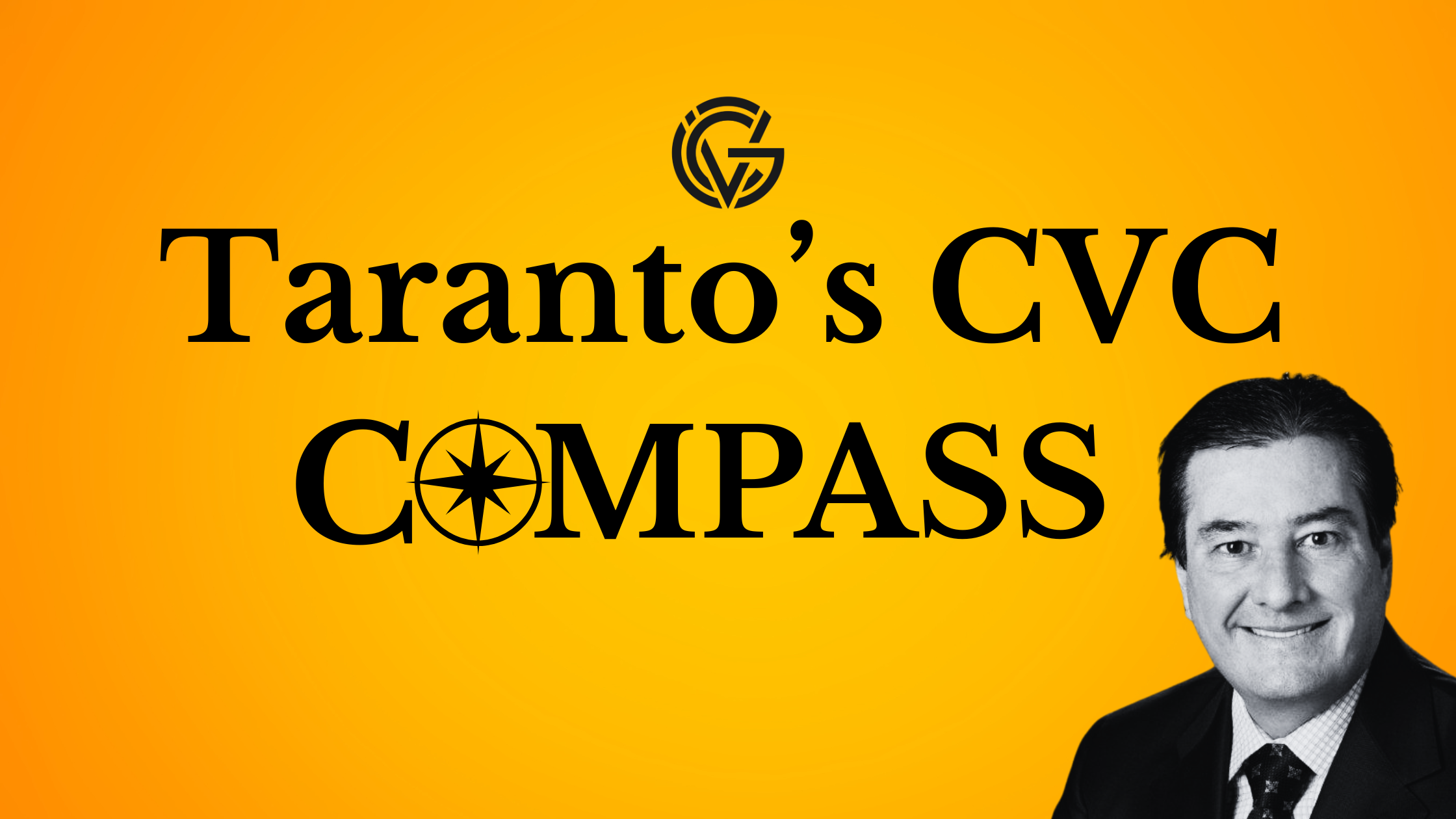Returns are great. Scaled innovations that move the needle are better.

Corporate venture capitalists are the mysterious cousins of traditional venture capital who show up at the innovation family reunion wearing a suit and holding a compliance binder.
They lurk in corporate development, whispering about “strategic alignment” and quietly investing in startups while trying to explain to their boss what a “pivot” is.
In theory, CVCs are here to help corporations ride the innovation wave. But behind all the startup glamor and $80 hoodies, there’s a fundamental question we must ask: How do we make innovation matter? Does a 10x return with no strategic impact matter? Or is a 2x scaled innovation that moves the needle the real prize?
The bottom line is…scaling innovation is the real work. It starts with strategy. Then it needs investment to build capabilities. It requires partnering, and then investment to scale. It takes discipline and commitment.
The origins of CVC: “We want in on the cool stuff”
Corporate venture capital was born from a simple realization: Startups are cool.
Big companies saw what VCs were doing—backing scrappy founders, disrupting industries, launching billion-dollar unicorns—and said: “Hey, we want some of that!”
But instead of trading Patagonia vests for hoodies and joining a WeWork, they created internal VC arms. Thus, the CVC was born: a strange hybrid meant to bridge the gap between “move fast and break things” and “let’s run that by Legal and Compliance first.”
“CVCs are the mullet of the venture world: business in the front, startup in the back.”
Today, CVCs are legit. Many units are staffed by pros who know the venture game and can invest with the best of them. But they also bring something extra to the table: access to massive distribution channels, customer bases, supply chains, and global scale.

Bill Taranto will be one of the speakers at the GCV Symposium on June 18-19, 2025
The return of returns (but make them strategic)
On the business in front of CVCs, let’s get one thing straight: returns are mandatory. Nothing says, “we’re good at our jobs” like pointing to a portfolio company’s successful exit and whispering, “Yes, we saw that coming.” And no CFO will back a CVC that can’t return its capital.
CVCs aren’t just chasing financial returns. They chase strategic returns too.
Which sounds impressive, until you realise “strategic” usually means five different things to seven different departments, none of which can even agree on the term “innovation.”
Sometimes it means investing in a startup that complements the core business. Other times, it means buying a front-row seat to a technology few understand but are terrified to miss out on as an investment opportunity.
But an obsession with returns-at-all-costs often leads to misaligned decisions—like scaling before the product works, launching before there’s demand, or endless pivoting. We’ve all seen it: a startup raising $150m to build a solution in search of a problem, only to crash 18 months later in a puff of hype.
Chasing a dream is part of venture, but in the end, CVCs need to build real companies that matter. Let’s remember, corporate venture capital isn’t just about flipping startups for sport. It’s about funding the kind of bold, groundbreaking innovation that makes real dents in the universe.
Innovation theatre
Let’s not sugarcoat it. CVCs, like any group with “innovation” in the job title, sometimes fall victim to innovation theatre. It’s like a regular theatre, but with more Post-it notes and significantly worse snacks.
CVCs occasionally back startups without ever planning to integrate or collaborate meaningfully. They host flashy demo days, launch “co-creation hubs,” and issue press releases featuring words like “disruption,” “ecosystem,” and “IoT.” But when digging deeper, there’s a sad truth: no one’s sure what happens after the investment.
“You can’t casually date innovation—you must commit to it.”
Does the startup get access to the parent company’s customer base? Maybe. Do they get buried in six months of procurement red tape and “alignment workshops”? Perhaps.
If you want innovation to matter, it can’t stop at PowerPoint. You can’t casually date innovation—you must commit to it, introduce it to your systems, to the right business leaders, run the right pilot designed to scale upon completion, and fund more. Imagine funding companies that weren’t just optimising brunch reservations with AI but tackling real problems that matter to your LP.
Scaling — where innovation goes to die or soar
Let’s say you’ve made the investment. You’ve found a bright, driven startup solving a real pain point. Everyone’s excited. Someone made a Slack channel about it. There were cupcakes.
Now comes the hard part: scaling it.
This is where CVCs often struggle—not because they lack vision, but because they’re attached to organisations where “speed” means rolling something out in two fiscal years instead of three. The startup wants to iterate weekly. The parent company has a 12-step sign-off process for changing font sizes. Here are some ideas to help to clear the scaling hurdle:
- Build alignment early – work with the business to define their needs for external innovation. Identify and shape use cases that are impactful for the business.
- Fully engage champions. Not just in the business line, but across support functions—legal, compliance, IT, procurement, HR and regulatory. You need internal teams who believe in what you’re trying to accomplish for your parent company.
- Provide kick-start budgets – provide funding to get off-budget-cycle programs started, with understanding the business picks up the rest of the tab and will commit to scale the program assuming key objectives are achieved.
- Have portfolio success managers – someone who can cut through red tape to facilitate commercial deals with portfolio companies as well as ensure that all parties are fulfilling their obligations to ensure the program achieves every objective.
- Offer growth consulting for start-ups – lay out a growth framework with portfolio companies and their syndicates on how to develop ecosystems that can accelerate growth.
- Partner with growth equity firms – they are able to write bigger checks and can work with private equity funds to roll up companies to accelerate scaling of key assets.
What does success looks like?
- A startup that helps find new customers for your business.
- A startup product being rolled out to customers providing new revenue streams.
- A corporate division gaining operational efficiencies, thanks to a new AI tool that wasn’t developed in-house.
- A new business line opened because someone at the CVC team believed in a niche technology before it was cool.
Now that’s an innovation that matters. And it still might return a 10x—just with a side of impact.
The glorious, messy future of CVC
So where does this leave us?
Corporate venture capital has the power to fund real innovation—not just fluff. But it takes effort. And committed patience.
CVCs must embrace their dual identity: part startup whisperer, part corporate translator. They must learn to spot not just what’s shiny, but what’s scalable. They must fight to bring those startups into the belly of the beast—and ensure they don’t get digested by bureaucracy.
They must walk the fine line between returns and relevance.
Between performance and purpose.
Between the chaos of innovation and the comfort of quarterly forecasting.
And when they do it right they not only get returns, they move the needle. They’ve funded innovation.

I’d love to hear your thoughts. If my opinion resonates with you or raises questions, let’s continue the conversation. Feel free to share your comments, feedback, or experiences with me on LinkedIn where I will also be posting on CVC Compass.
Bill Taranto is president of MSD Global Health Innovation Fund and vice president of MSD Global Health Innovation Group. MSD GHIF has $600M under management and provides growth capital to companies that improve healthcare delivery and services.









